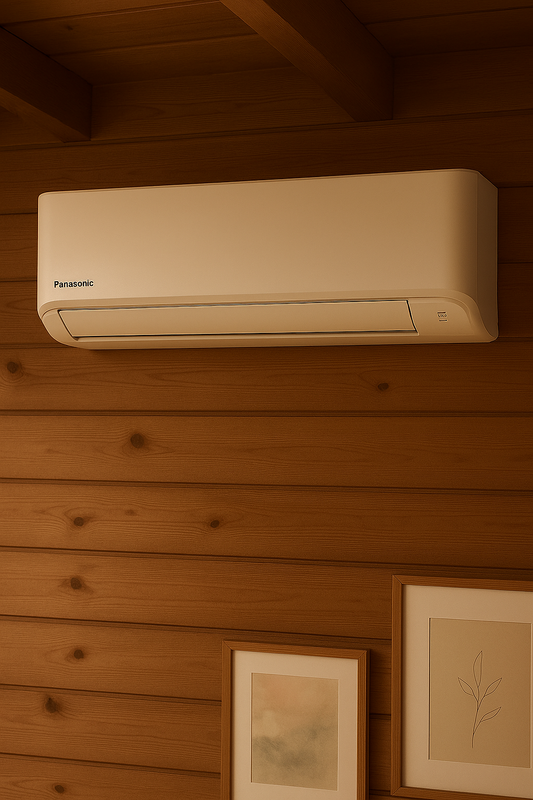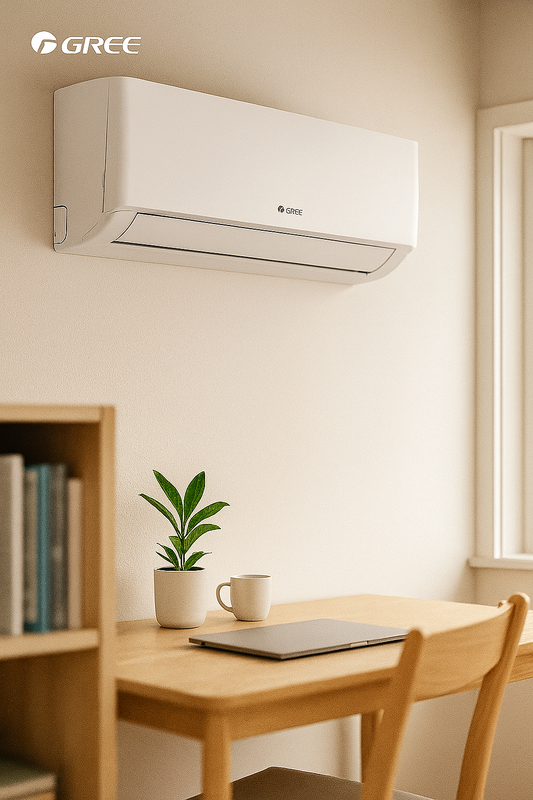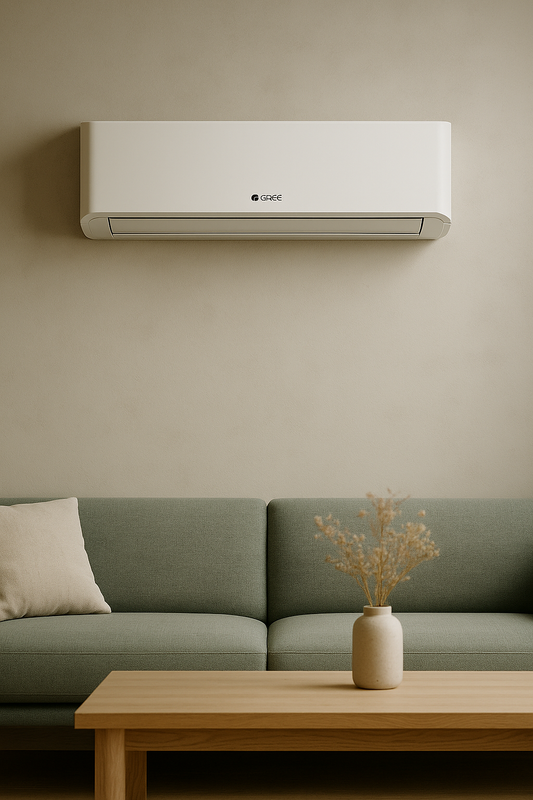Daikin Bergvärme Installation: En Effektiv Energilösning
Daikin bergvärme är en populär och effektiv energilösning som erbjuder hållbara fördelar för både privata hem och företag. I denna artikel kommer vi att utforska installationen av Daikin bergvärme, dess definition, fördelar, användningsområden, relaterade tekniker och vanliga frågor.
1. Definition och Bakgrund
Daikin bergvärme är en typ av värmepumpsystem som utvinner energi från marken för att värma upp byggnader och producera varmvatten. Genom att utnyttja den naturliga värmen som lagras i marken kan bergvärme erbjuda en energieffektiv och miljövänlig uppvärmningslösning.
Installationen av Daikin bergvärme innefattar vanligtvis en värmepumpsenhet som placeras i marken, antingen vertikalt genom borrhål eller horisontellt genom en kollektorslang. Denna enhet är ansluten till en värmepumpsinomhusenhet som distribuerar den genererade värmen till fastigheten.
2. Fördelar och Användningsområden
Daikin bergvärmeinstallation erbjuder flera fördelar, inklusive:
- Energieffektivitet: Genom att utnyttja den naturliga värmen i marken kan bergvärme minska energiförbrukningen och därmed bidra till lägre energikostnader.
- Miljövänlighet: Bergvärme är en förnybar energikälla som genererar minimala koldioxidutsläpp, vilket minskar den totala miljöpåverkan.
- Långsiktig ekonomisk avkastning: Trots de initiala installationskostnaderna kan Daikin bergvärme erbjuda långsiktiga besparingar och en hög avkastning på investeringen.
- Versatilitet: Bergvärme kan användas för att både värma upp byggnader och producera varmvatten, vilket gör det till en mångsidig energilösning.
Daikin bergvärme är lämplig för en rad olika användningsområden, inklusive bostäder, kommersiella fastigheter, industriella anläggningar och offentliga byggnader. Dess flexibilitet och effektivitet gör det till en attraktiv lösning för olika typer av fastigheter.
3. Relaterade Tekniker, Begrepp eller Variationer
Utöver bergvärme finns det andra relaterade tekniker och variationer inom värmepumpsområdet, inklusive:
- Luft-vatten värmepumpar: Dessa värmepumpar utvinner värme från utomhusluften och överför den till ett vattenburet värmesystem.
- Mark-vatten värmepumpar: Denna teknik liknar bergvärme, men använder istället en kollektorslang som ligger i marken.
- Vatten-vatten värmepumpar: Dessa system använder en vattenkälla, såsom en sjö eller brunn, för att utvinna värmeenergi.
Det är viktigt att överväga de olika alternativen och deras lämplighet för specifika fastigheter innan man väljer en installationsmetod.
4. Vanliga Frågor (FAQ)
4.1. Vad är den genomsnittliga livslängden för en Daikin bergvärmeinstallation?
En välinstallerad och underhållen Daikin bergvärmeanläggning kan förväntas ha en livslängd på cirka 20-25 år.
4.2. Kräver Daikin bergvärme regelbunden service och underhåll?
Ja, regelbunden service och underhåll är viktigt för att säkerställa att bergvärmesystemet fortsätter att fungera effektivt och pålitligt över tid.
4.3. Vilka faktorer påverkar kostnaden för en Daikin bergvärmeinstallation?
Kostnaden för bergvärmeinstallation kan variera beroende på faktorer såsom fastighetens storlek, markförhållanden, tillgänglighet och val av installationsmetod.
5. Sammanfattning
Daikin bergvärmeinstallation erbjuder en hållbar och energieffektiv lösning för uppvärmning och varmvattenproduktion. Med dess fördelar, användningsområden och relaterade tekniker är bergvärme ett attraktivt alternativ för fastighetsägare som strävar efter att minska sin miljöpåverkan och energikostnader.
Genom att förstå processen för installationen, dess definition och fördelar kan fastighetsägare fatta informerade beslut om att implementera Daikin bergvärme som en del av deras hållbarhetsstrategi.
6. Installation Process
The installation process of Daikin ground source heat pump involves several key steps:
- Site Assessment: A thorough assessment of the property is conducted to determine the feasibility and suitability of the ground source heat pump installation.
- Ground Loop Installation: Depending on the chosen configuration (vertical or horizontal), the ground loop is installed to extract heat from the ground.
- Indoor Unit Placement: The indoor heat pump unit is installed within the property, typically in a utility area or mechanical room.
- Piping and Ductwork: The necessary piping and ductwork are set up to distribute the heated or cooled air throughout the building.
- System Testing: Once the installation is complete, the system undergoes comprehensive testing to ensure proper functionality and efficiency.
By understanding the installation process, property owners can gain insights into the steps involved and the importance of professional installation for optimal performance.
7. Energy Efficiency Considerations
Daikin ground source heat pump systems are designed with a focus on energy efficiency, utilizing advanced technologies such as variable speed compressors and intelligent controls to optimize performance. The high coefficient of performance (COP) of these systems ensures minimal energy wastage during operation, contributing to long-term energy savings for the property owner.
For example, the inverter-driven technology utilized in Daikin heat pumps allows for precise modulation of heating and cooling output, matching the exact requirements of the building and reducing energy consumption.
8. Case Studies and Real-World Applications
Exploring real-world applications and case studies of Daikin ground source heat pump installations can provide valuable insights into the performance and benefits of these systems in diverse settings. From residential homes to commercial facilities, showcasing successful implementations and their impact on energy efficiency and comfort can aid in illustrating the practical advantages of Daikin ground source heat pumps.
In addition, highlighting specific projects and their outcomes can offer tangible examples of the long-term economic and environmental benefits experienced by property owners who choose Daikin ground source heat pump technology.
9. Comparing Operating Costs
When evaluating the potential of Daikin ground source heat pump installations, it is essential to compare the operating costs with traditional heating systems. By analyzing the long-term energy consumption and maintenance expenses, property owners can make informed decisions regarding the economic benefits of transitioning to ground source heat pumps.
Furthermore, conducting a comprehensive cost comparison can highlight the potential savings and return on investment associated with Daikin ground source heat pump technology.
10. Integration with Renewable Energy Sources
Daikin ground source heat pump systems can be integrated with various renewable energy sources, such as solar panels or wind turbines, to further enhance their sustainability and reduce reliance on grid electricity. This integration presents opportunities for property owners to create comprehensive renewable energy solutions that align with their environmental objectives.
By exploring the synergies between ground source heat pumps and other renewable energy technologies, property owners can maximize their energy independence and minimize their carbon footprint.
11. Maintenance Best Practices
Implementing maintenance best practices is crucial for ensuring the longevity and optimal performance of Daikin ground source heat pump installations. Property owners should adhere to manufacturer-recommended maintenance schedules, conduct regular inspections, and address any operational issues promptly to preserve the efficiency and reliability of the system.
By prioritizing maintenance best practices, property owners can safeguard their investment and maximize the benefits of Daikin ground source heat pump technology.
12. Performance Monitoring and Analytics
Utilizing performance monitoring and analytics tools allows property owners to gather valuable data on the operational efficiency and energy consumption patterns of their Daikin ground source heat pump systems. By analyzing this data, property owners can identify opportunities for optimization, detect potential inefficiencies, and make informed adjustments to enhance performance.
Continuous monitoring and analysis contribute to the ongoing improvement of system efficiency and the realization of long-term energy savings.
13. Industry Trends and Innovations
Staying informed about industry trends and technological innovations in the field of ground source heat pumps enables property owners to explore emerging advancements and potential enhancements for their heating systems. By remaining abreast of industry developments, property owners can strategically plan for future upgrades or optimizations that align with the latest innovations.
Understanding industry trends empowers property owners to make proactive decisions that enhance the performance and sustainability of their Daikin ground source heat pump installations.



